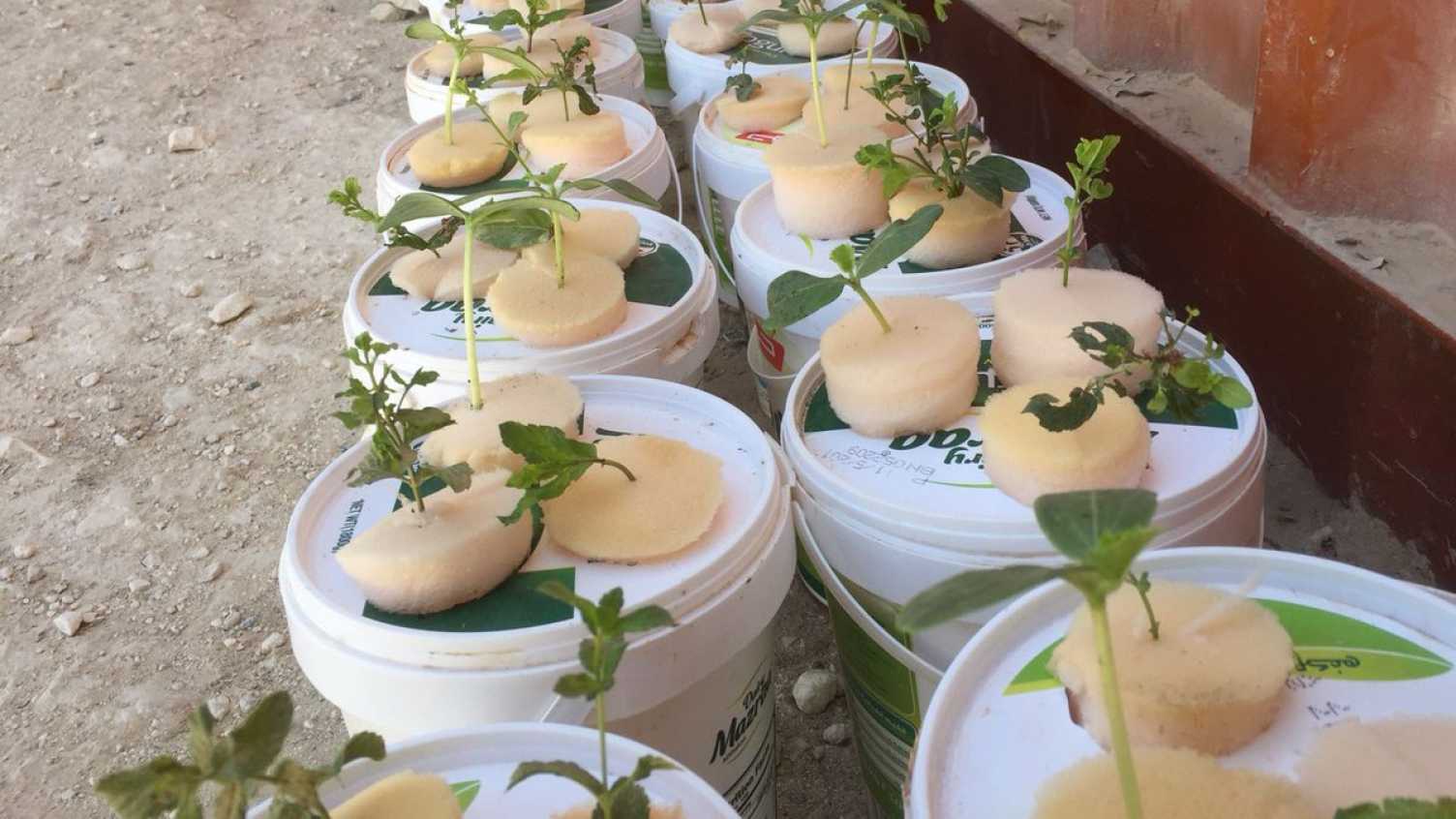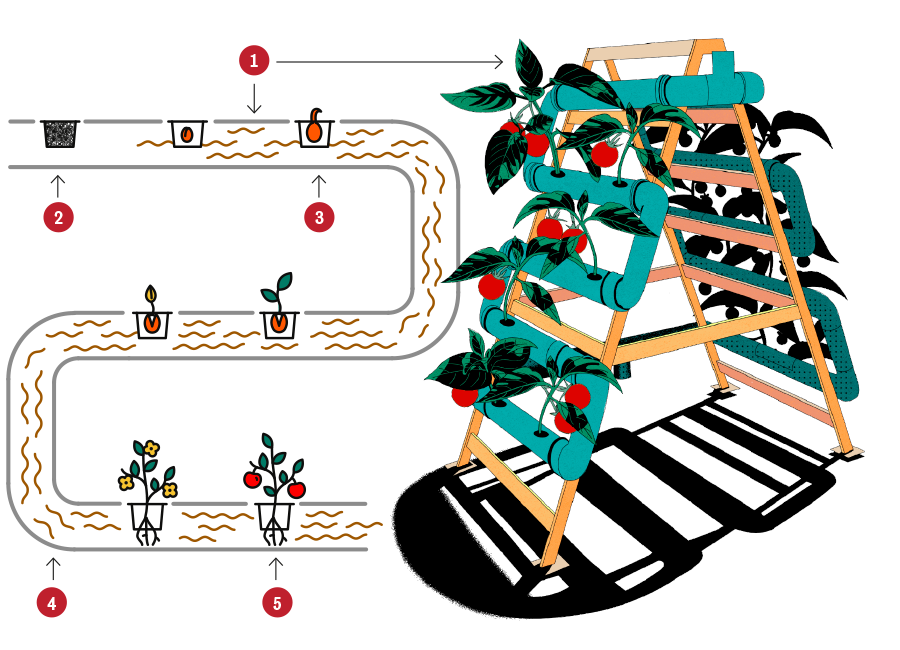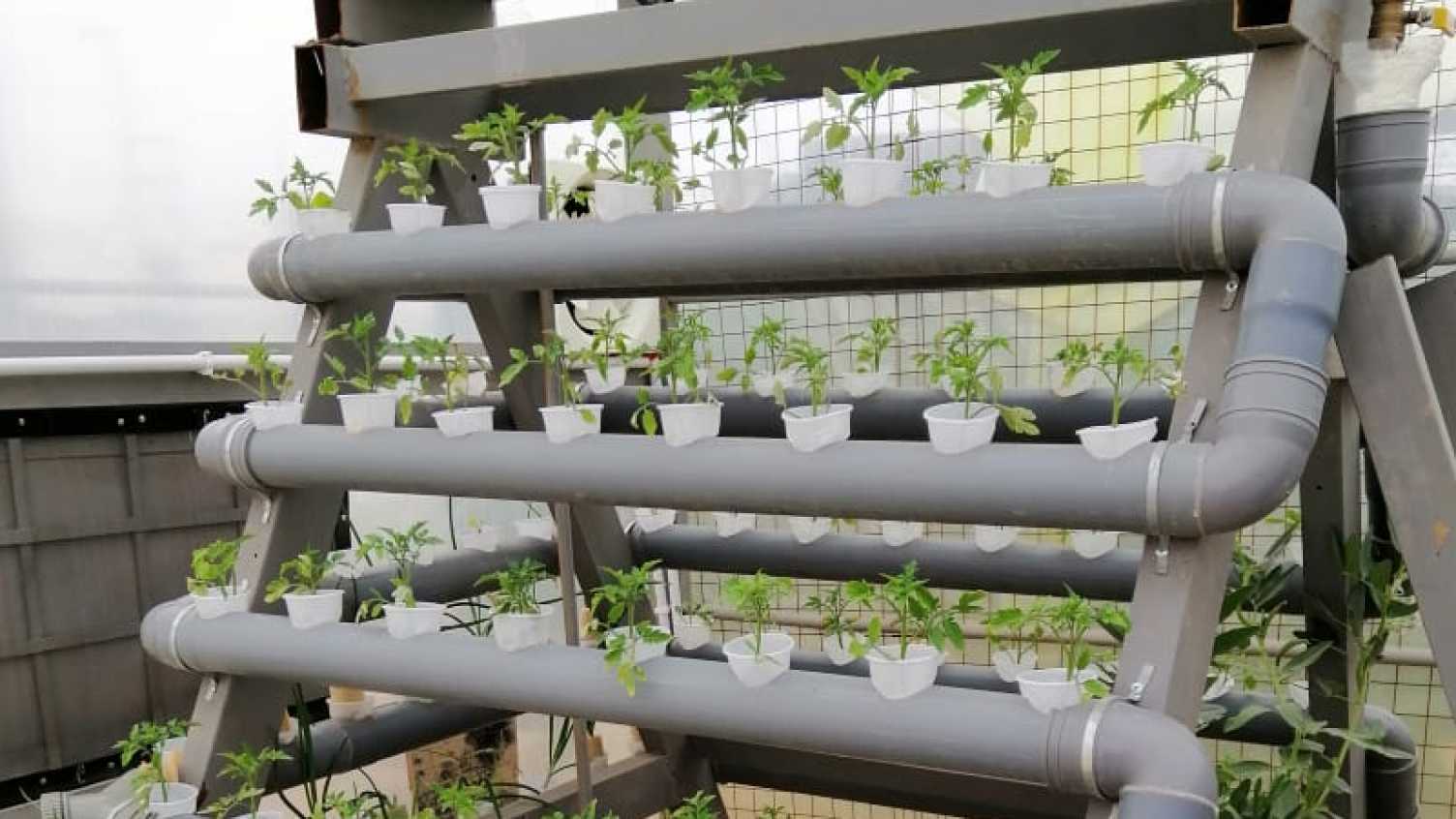
- Inspiring People -
- 5mins -
- 325 views
How old mattresses could help solve world hunger
Refugees in Jordan teamed up with scientists from the UK to grow fresh food using old mattresses.
What use is an old mattress to the hungry?
Recycled mattress foam may not be the first thing that springs to mind when thinking of ways to help the hungry. However, scientists at the University of Sheffield are nothing if not innovative. This is the compelling story of how one researcher, Professor Tony Ryan, joined the dots between his high tech hydroponics work in Sheffield and a pile of old mattresses languishing in the corner of a Jordanian refugee camp—with seriously life-changing results.

The Zaatari refugee camp is on the front line of the greatest humanitarian crisis of modern times
The Zaatari refugee camp, home to 80,000 men, women and children displaced by war, it is the largest camp for Syrian refugees in the world.
Many have arrived with limited means to cover even basic needs, and those who could at first rely on savings are now increasingly in need of help. It is estimated that 93% of refugees in Jordan live below the poverty line. They once led lives very like our own – they were farmers, teachers, lawyers, engineers, nurses and builders.
In the camp, all the normal events of life take place – but they present greater challenges. The United Nations’ Refugee Agency (UNHCR) is leading a coordinated effort, together with partners, non-governmental organisations and the Jordanian Government, to offer a lifeline. And staff and students from the University of Sheffield are actively engaged in addressing a range of everyday problems in the camp. This isn’t a one-way process. They are working with, not just for, the residents and learning from them along the way.
Led by Professor Tony Ryan, Director of the University’s Grantham Centre for Sustainable Futures, they are using their expertise to help grow food and develop amenities using pioneering techniques. Recycling materials from the camp – such as mattresses, bicycles and yogurt pots – they have created a host of home improvements and innovations, including windmills, air conditioning, mobile phone chargers and wheelchairs.
“Make no mistake, the people who end up in these camps face daily struggles that many of us cannot imagine,” commented Professor Ryan in the university’s Alumni magazine, Your University. “But those I’ve met embody values that are often forgotten by those of us in more privileged parts of the world: an adaptable approach to solving problems, an aversion to waste, a sense of community. As hard as we must strive to live in a world where no one is forced to flee their home, there is much we can learn from Syria’s refugees.”
Source: YourUniversity

Professor Ryan’s “mattress moment” is a win-win!
Taken into a warehouse full of used polyurethane foam mattresses, Professor Tony Ryan made a connection to the research of a PhD student in Sheffield who was involved in working out how polymer foams can be used as artificial soils to grow crops… ‘What if the knowledge of Grantham Centre researchers and the resourcefulness of the refugees could be combined to give every family in Zaatari camp a vegetable plot made out of recycled mattress foam?’
This would avoid them breaking Jordanian law, which does not permit refugees to grow plants directly in the earth—or build permanent structures—and turn a problem for the UNHCR, in the form of a pile of unusable mattresses, into an opportunity to improve everyone’s wellbeing.
Hydroponics is a way of growing plants without soil, using a nutrient solution with plant roots supported in an inert medium. In this case, yogurt tubs provided the pots and mattress foam the growing medium. The basic principles of this system were introduced to residents at a workshop run by Grantham Scholar Harry Wright, supported by the Norwegian Refugee Council. The attendees quickly set up a production line, cutting raw materials, making up nutrient solutions, and planting seedlings and cuttings into the pots. Around 200 refugees have now been trained to grow plants using hydroponics.
With funding from the University, researchers are making four to five trips a year to the camp. Once the initial Sheffield projects were under way, it became obvious that their day-to-day success needed a broader knowledge base. Social scientists, geographers, architects and management experts have now joined the scientists and engineers.
Aldous Everard, Business Manager of the University’s Sheffield Solar, the UK photovoltaic industry’s leading scientific data resource, has been a regular visitor to Zaatari. On a recent trip, he caught up with the progress of the hydroponics scheme. He told Your University, “Helen Storey has established a new compound, called Five Caravans, where female-centred training is provided. One of the caravans houses one of our hydroponics set-ups. Being on-site to monitor progress is important – and WhatsApp is very useful if you want to check any problems with colleagues back in Sheffield.”
Source: YourUniversity

And Beyond Zaatari?
Professor Ryan told Your University, the alumni magazine of the University of Sheffield:
“We are having discussions with the UNHCR about how our co-created schemes and research findings can benefit the wider population throughout Jordan. We are also investigating a collaboration with a major plastics company and the Jordanian Government on transforming the sustainability of waste management in refugee camps. Another potential project involves introducing hydroponics to roof-top gardens in the Palestinian Aida refugee camp. The next step involves bids for research grants so we can continue to develop and share our knowledge and experiences. How we build resilience and promote sustainable living is relevant whether in Jordan or back here in the UK.”
Professor Ryan added, “The solutions developed in Zaatari are the sort of solutions the world needs in order to respond to another global crisis – the environmental one. We must reduce global consumption by recycling more materials. We also need to deal with growing food in a changed climate – one with less water and more CO2.
“And we have to face the fact that many more people will be living in refugee camps in the future – predictions estimate there will be millions of environmental refugees as a result of climate change. Finding ways to help displaced people is all part and parcel of creating a sustainable future.”
The Desert Garden Appeal: Secure the future of the Desert Garden (see below)
Source: YourUniversity

